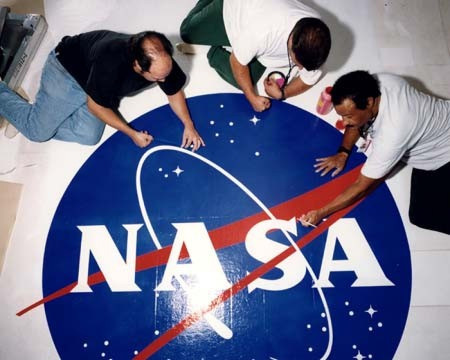NASA in a sticky situation over meteorite alien life report

NASA finds itself in a sticky situation over the meteorite alien life report from one of its own. The report that claims that alien life was detected in three meteorites has sent shock waves across the world. The US space agency, however, is not very keen on associating itself with the paper by Richard Hoover, an engineer at NASA's Marshall Space Flight Center, Huntsville, Alabama.
NASA formally distanced itself from the paper published by the online Journal of Cosmology on Monday.
NASA cannot stand behind or support a scientific claim unless it has been peer-reviewed or thoroughly examined by other qualified experts.... NASA was unaware of the recent submission of the paper to the Journal of Cosmology or of the paper's subsequent publication, Paul Hertz, chief scientist of NASA's science mission directorate, said in a statement.
Various scientists have also dismissed Hoover's claim that fossils of alien microbes born in outer space had been found in meteorites on Earth, citing lack of evidence.
That is a claim that Mr. Hoover has been making for some years, said Carl Pilcher, director of NASA's Astrobiology Institute.
Critical comments flooded on the Internet. I'm surprised anyone is granting it any credibility at all, wrote blogger and biologist Paul Z. Myers of the University of Minnesota.
In his paper, Hoover claims to have found fossils of once-living organisms in certain meteorites.
Life on Earth may have come from other planets, the article in The Journal of Cosmology also goes on to state.
The two-year-old publication developed by Rudy Schild of the Harvard-Smithsonian Center for Astrophysics has earned the reputation of being friendly to these kinds of theories in the past.
Although NASA is trying to distance itself from Hoover's paper, the space agency nevertheless continues its search for extraterritorial life. Another recent claim that was condemned by the scientist community was that of NASA-sponsored researchers, who said they had discovered that certain bacteria in California could incorporate arsenic into their DNA in place of phosphorus. They concluded that this finding indicated the possibility of unusual life forms in space.
Besides this, there was another NASA researcher who had made a claim similar to that of Hoover 15 years ago. In 1996, David McKay, Chief Scientist for Astrobiology at the Johnson Space Center, said he had found traces of Martian life inside a meteorite. The meteorite ALH84001 was found in Antarctica in 1984. Dr. McKay's scientific paper postulating past life on Mars went on to be heavily cited.
© Copyright IBTimes 2024. All rights reserved.





















